Springtime golf course maintenance in Japan
 Golf course maintenance in the spring often involves aerification, cherry blossoms, & sometimes—snow
Golf course maintenance in the spring often involves aerification, cherry blossoms, & sometimes—snowThis photo of the 18th green at Habu Country Club in March 2001 appeared in my Facebook feed on March 20, and it reminded me of springtime maintenance on golf courses in Japan. I was in Japan during the last week of March. I’ve selected some photos from that week to show a few things about maintenance during that time of year, and to show what golf course turf looks like when the cherry blossoms are blooming.
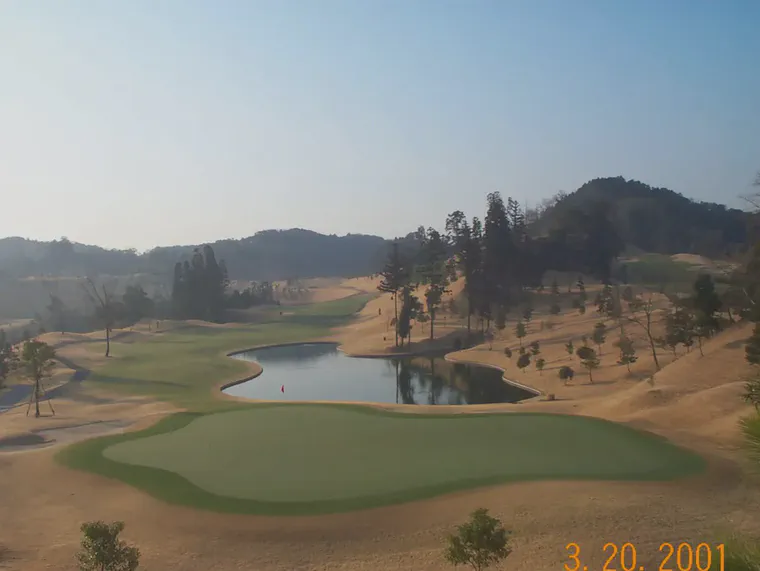
I was the golf course superintendent at Habu CC from September 2000 until August 2001. I’ve told the story many times about the thousands of rounds that were played over frosted turf that winter. Seeing that photo from March 20 reminds me that the grass tolerated all that winter traffic with no serious damage.
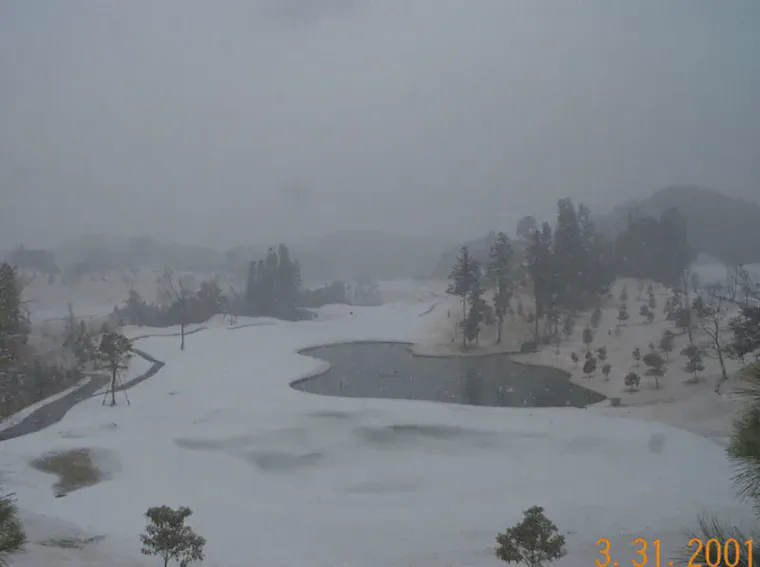
There was still some frozen weather yet to come that year. I remember snow at the end of March and at the beginning of April.
Now for the photos from a recent trip.
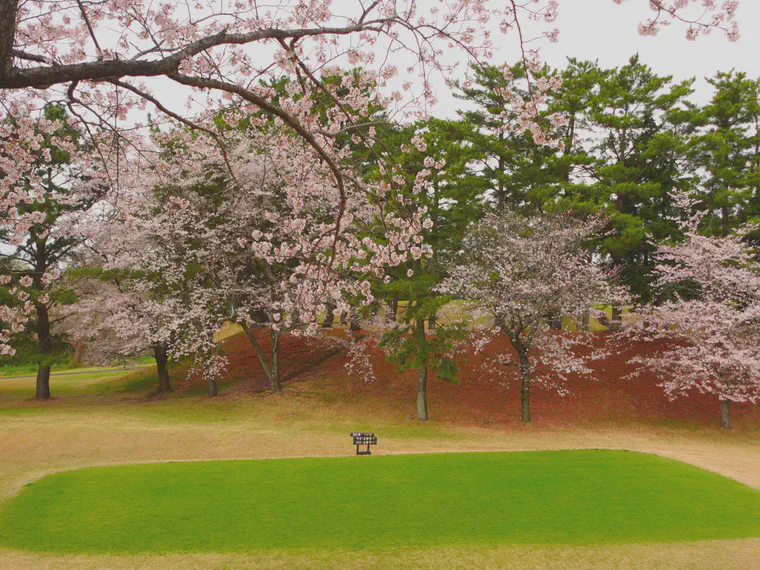
There are a lot of cherry trees in Japan. Golf courses often have cherry trees as part of the landscape. This tee, for example, is enclosed by cherry trees. You’ll notice on the yardage sign at this tee that there are two yardages given. This course is one of the approximately 35% of courses in Japan that use the 2 green system.
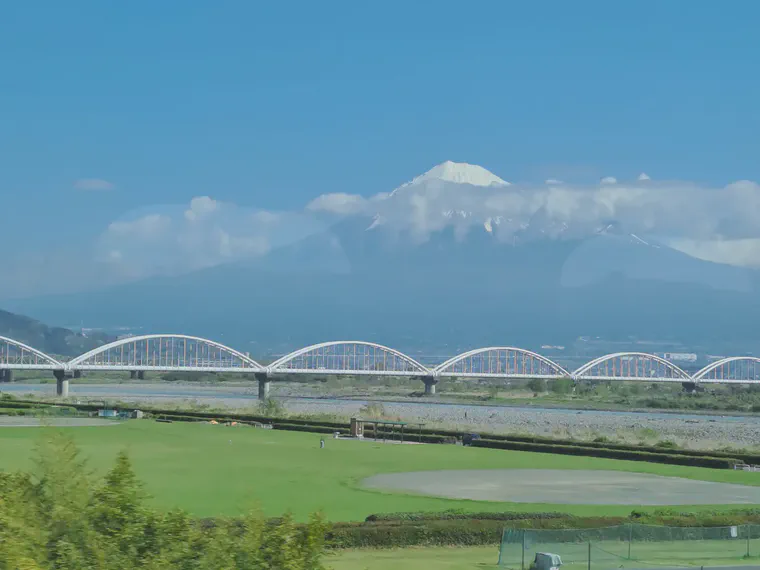
In the spring one can see a lot of snow on the upper slopes of Mt. Fuji. And one can actually see Mt. Fuji, sometimes. In the winter, the air is often clear and there aren’t as many clouds as in summer. Summer often has clouds and humidity that not only restrict the amount of photosynthetically active radiation reaching the turf, they also block the view of Mt. Fuji. I was riding the shinkansen (bullet train) through Shizuoka prefecture when I passed a riverside park with baseball fields and Mt. Fuji in the background. In the winter, one would often see Mt. Fuji with no clouds around it. In the summer, one might not see the mountain at all, because of clouds.
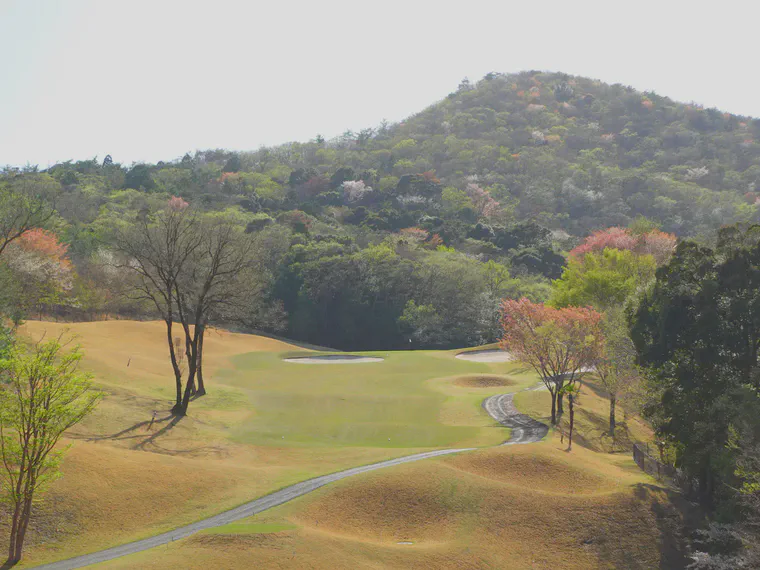
There are a lot of wild cherry trees in the forests, and they bloom in the spring too. These yamazakura (mountain cherry) trees make a prominent display at many golf courses in Japan. Many golf courses in Japan are located away from the cities in mountainous areas. The drive to these golf courses in the spring often includes vistas of mountain slopes filled with yamazakura in full bloom.
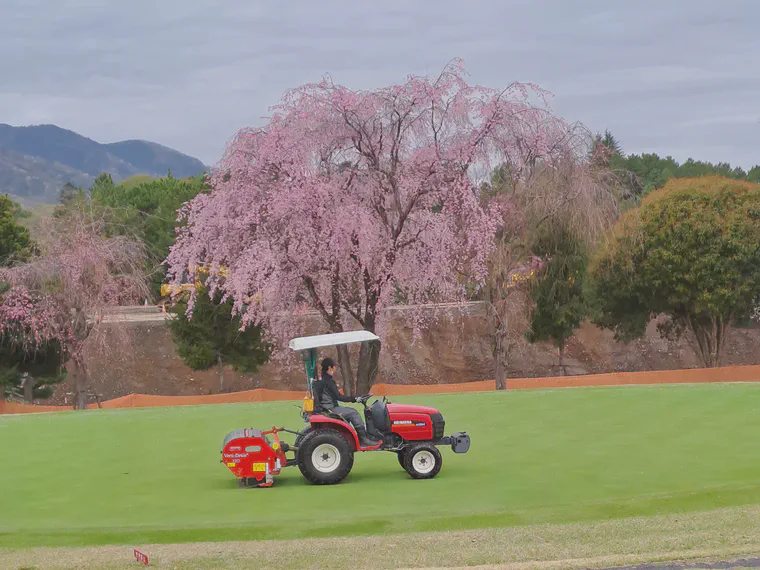
Core aeration, or solid-tine aeration, is conducted at most golf courses in March. If the course uses the 2 green system, then the cultivation events will be staggered in time. One set of greens will be kept in play while one set of greens is aerified. Then, usually three to six weeks later, all play will be switched to the now-recovered set of greens that were aerified, and the second set of greens will receive their spring cultivation.
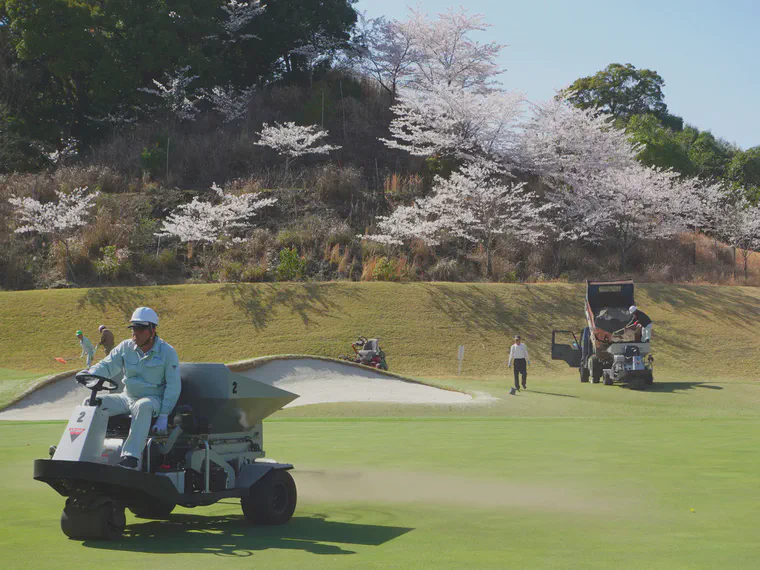
Sand topdressing is also applied in the spring, usually immediately after the cultivation. Annual sand topdressing amounts in Japan tend to be from about 3 mm to 10 mm. I suspect that if there were a comparison of sand amounts applied to bentgrass greens in the United States and in Japan, and if one would adjust those amounts for the length of growing season, there would be larger quantities of sand applied to bentgrass putting greens in the United States.
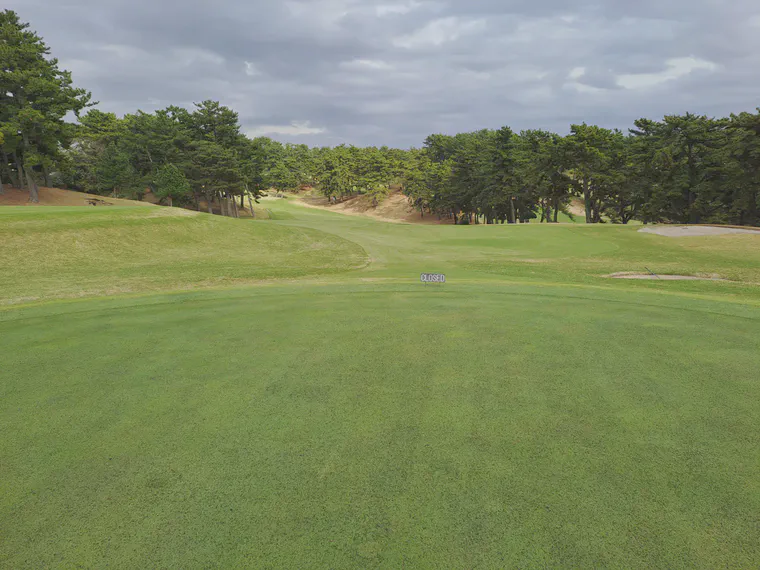
I visited one golf course that had spread compost on the greens after aeration. There is a “CLOSED” sign at the front of this green. One can do that when the course is using the two green system.
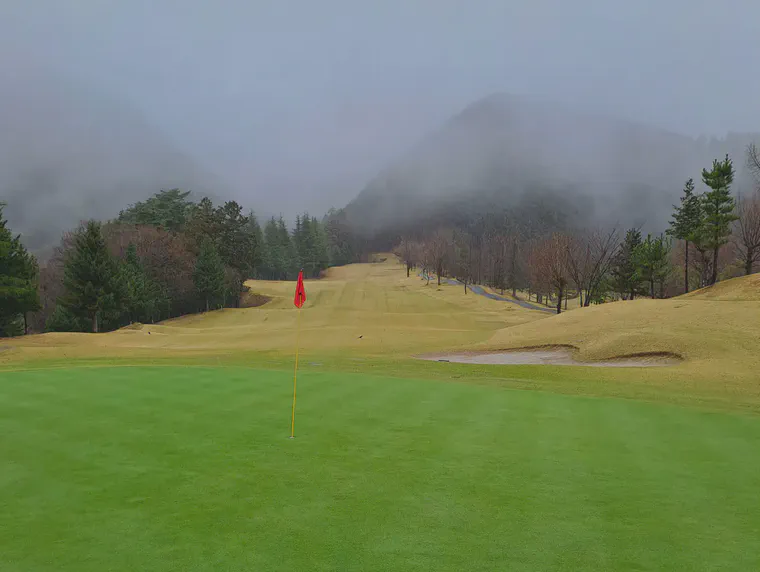
Most golf courses in Japan have creeping bentgrass greens, korai (Zoysia matrella) tees and fairways, and noshiba (Zoysia japonica) rough. The korai and noshiba are dormant in the winter, and don’t green up until April in most locations. The course in the photo above is in the foothills of Mt. Fuji, and has the more cold-tolerant noshiba on tees and fairways as well.
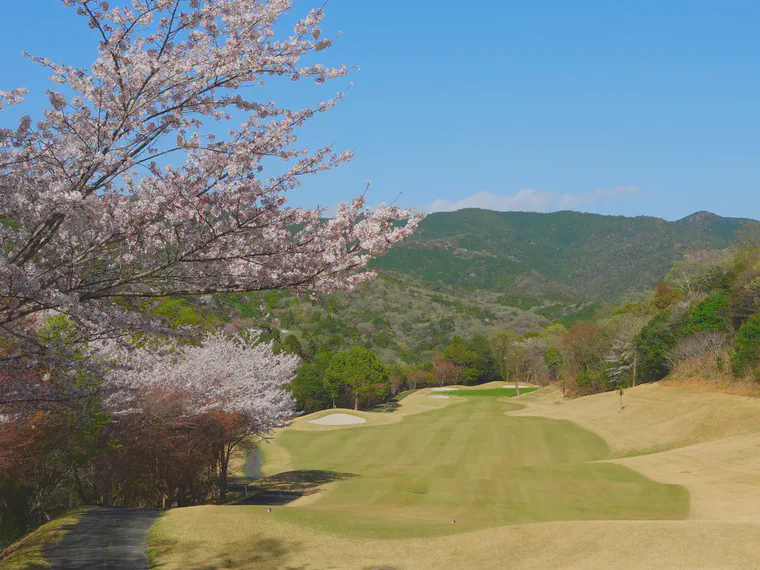
The korai fairways at this course in Shizuoka were just starting to green up at the end of March. The bentgrass greens at this course were originally planted to ‘Crenshaw’ creeping bentgrass and have been interseeded with ‘007’ creeping bentgrass. The color and the vigor of the bentgrass at this time of year stood out to me for a couple of reasons.
For one, these greens don’t receive much nitrogen (N) fertilizer at all. This course uses the one green system, so these greens are in play every day. There were 45,000 rounds of golf played here in 2022, and the greens received N fertilizer of about 7 g/m2 (1.4 lbs/1000 ft2).
For another, there had been 9,400 rounds played already in 2023: 3,000 in January, 2,800 in February, and 3,600 in March. But the N applied to greens this year so far has been only 0.46 g/m2—that’s less than one-tenth of a pound of N per 1,000 ft2. That was applied to sprays of urea.
And, these 9,400 rounds were played with no frost delays. Nor was there any damage to the grass. Frost covers, each about 200 m2 (about 2,000 ft2) in area, were placed over the day’s hole location on holes 1–5 and 10–17 during the winter.1 None of the golf courses I visited on this trip had frost delays in winter. None had damage from frost, either.2
Considering the length of the growing season at this location, and the number of rounds played, and the relatively low amount of N fertilizer applied, I’m struck with the idea that perhaps bentgrass can tolerate golfer traffic at lower N amounts than typically used.
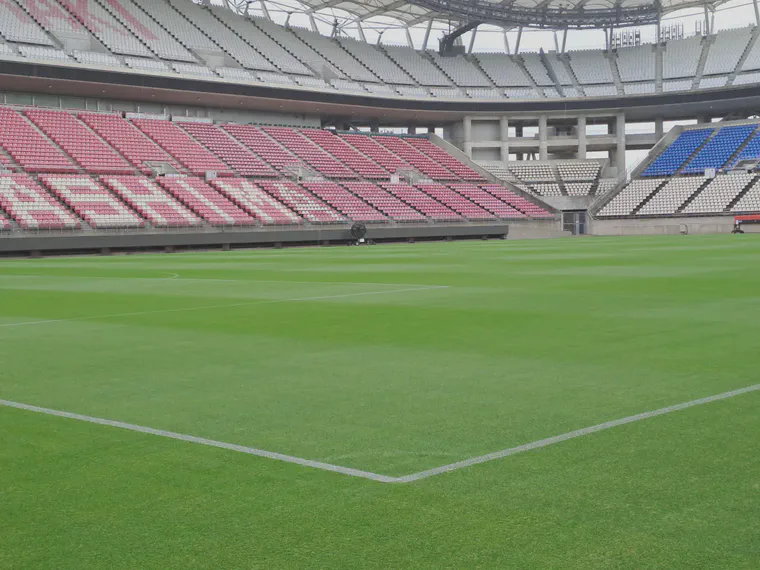
I went to Kashima Stadium too. March is the start of the J-League season, and the stadium pitch was being maintained at a low mowing height, similar to a golf course fairway. At the training ground, the bermudagrass base was greening up and the mowing heights were being lowered to encourage the bermudagrass to grow through the perennial ryegrass overseed.
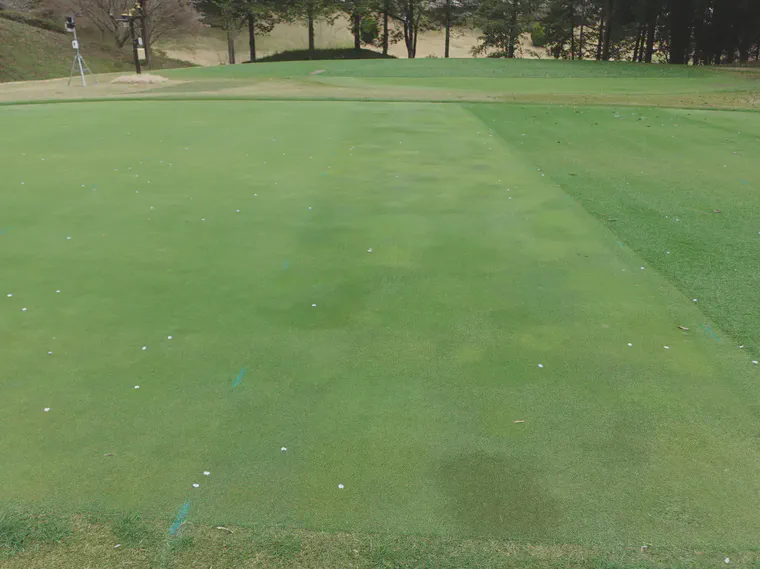
I also looked at some creeping bentgrass nurseries and test plots. There are a few petals from cherry blossoms sitting on this test green. There are also different bentgrass varieties growing in strips across this green. ‘Penncross’ is easy to see in the center of the image, with the many patches having different color and leaf texture. Many golf courses in Japan have bentgrass nurseries with different varieties planted side-by-side for evaluation. In a climate with year round golf and hot summers,3 one can observe big differences in variety performance when stresses such as low mowing height and abrasive traffic damage are applied during the summer.
Golf courses in Japan almost always use a 2 tee start, with players starting on the first hole and on the tenth hole beginning with the first morning tee time. ↩︎
See this video with Albert Bancroft at the Camp Zama Golf Course for a discussion about frost covers and non-existent frost damage. ↩︎
Peak summer temperatures in major cities in South, West, Central, and East Japan are higher than the temperatures in tropical Southeast Asia at the same time of year. ↩︎